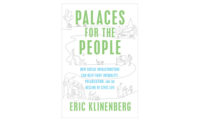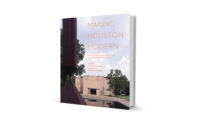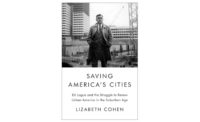Review of 'Building America: The Life of Benjamin Henry Latrobe'
By Jean H. Baker

Building America: The Life of Benjamin Henry Latrobe, by Jean H. Baker. Oxford University Press, 304 pages, $34.95.
In the fall of 1817, architect Benjamin Henry Latrobe had reached his breaking point. His son had recently died, debts piled ever higher, and the commissioner overseeing Latrobe’s work completing the Capitol in Washington, D.C., Col. Samuel Lane—a diminutive man handicapped by a gunshot wound—bombed him with military-style requests for information and ordered materials without informing Latrobe. He counted the days Latrobe was away from the Capitol project on other matters.
Called by President James Monroe to the White House for a meeting with Lane, Latrobe, who stood more than 6 feet tall, seized the smaller man by the collar and exclaimed, “Were you not a cripple I would shake you to atoms, you poor contemptible wretch.” Monroe intervened, and Latrobe turned to the president and claimed that Lane’s “provocations” and Latrobe’s birth, family, education, and talent rendered his outburst “excusable.”
The incident, as described by Latrobe’s wife, Mary, in a memoir, and recounted in Baker’s valuable new biography, says much about its subject’s stressful and combative work life and sense of himself.
Baker puts Latrobe’s flaws, and his more endearing qualities as a father and husband, under the socially astute modern historian’s microscope. The man said to be America’s first architect and engineer (though many others performed those services at the time) is given credit for proclaiming that architecture was a sovereign profession—one that couldn’t be trusted to mere “mechanics”—that required training and deserved fair compensation. After emigrating from England at age 32, Latrobe found little respect for architects in his adopted country and often was stuck paying the costs of a project and blamed for anything that went wrong.
Despite his aspirations to wealth and status—he falsely claimed he was descended from an aristocratic French family—Latrobe never ascended to financial security and an autumnal satisfaction with his life’s work. A more diplomatic man might have, but that wasn’t Latrobe.
Little of his work still stands; much is only on paper. What is extant contains parts of the U.S. Capitol, including the famous corncob Corinthian column capitals; designs of numerous houses; and advice to Thomas Jefferson on his plan for the University of Virginia. Latrobe was the most skillful designer of Neoclassical structures, linking the young country to an Edenic republicanism. Sublimely multitalented, Latrobe the engineer was equally adept, flushing fresh water through the streets of postcolonial Philadelphia with an innovative pump system—powered by a steam engine enclosed within a domed cylinder and fronted by Doric columns. If the ensuing centuries have brought too many dreary American buildings with columned porticos, one could argue Latrobe helped start that, too.
This book should succeed Talbot Hamlin’s Pulitzer Prize–winning doorstopper, Benjamin Henry Latrobe: Architect, Artist, Engineer (1955), as the definitive biography. Baker does her best to bring to life Mary Latrobe, who provided ballast and brains amid her husband’s numerous bad investments and incapacitating migraines. The Latrobes were itinerants, leaving behind creditors and disappointments with each move. Baker notes Latrobe’s appreciation of his wife’s “tolerance for their vagabond life.”
In one last reach for financial security via a prestigious commission in 1818, Latrobe, by this time burdened with a reputation for extravagance and temperament, came in second in a suspiciously unfair architectural competition (Latrobe hated them) to design the Second Bank of the U.S. in Philadelphia. The architect then led his family to New Orleans, contracted yellow fever, and died at 60.
Designers have over the centuries continued Latrobe’s search for quality American architecture, though the direct line to Louis Sullivan and Frank Lloyd Wright that Baker sees may be claiming too much. You can say that Latrobe was one of America’s first professionally trained architects, and that his legacy is one of an uncompromising and long-suffering champion for his profession and its vision and stewardship of the built environment.





